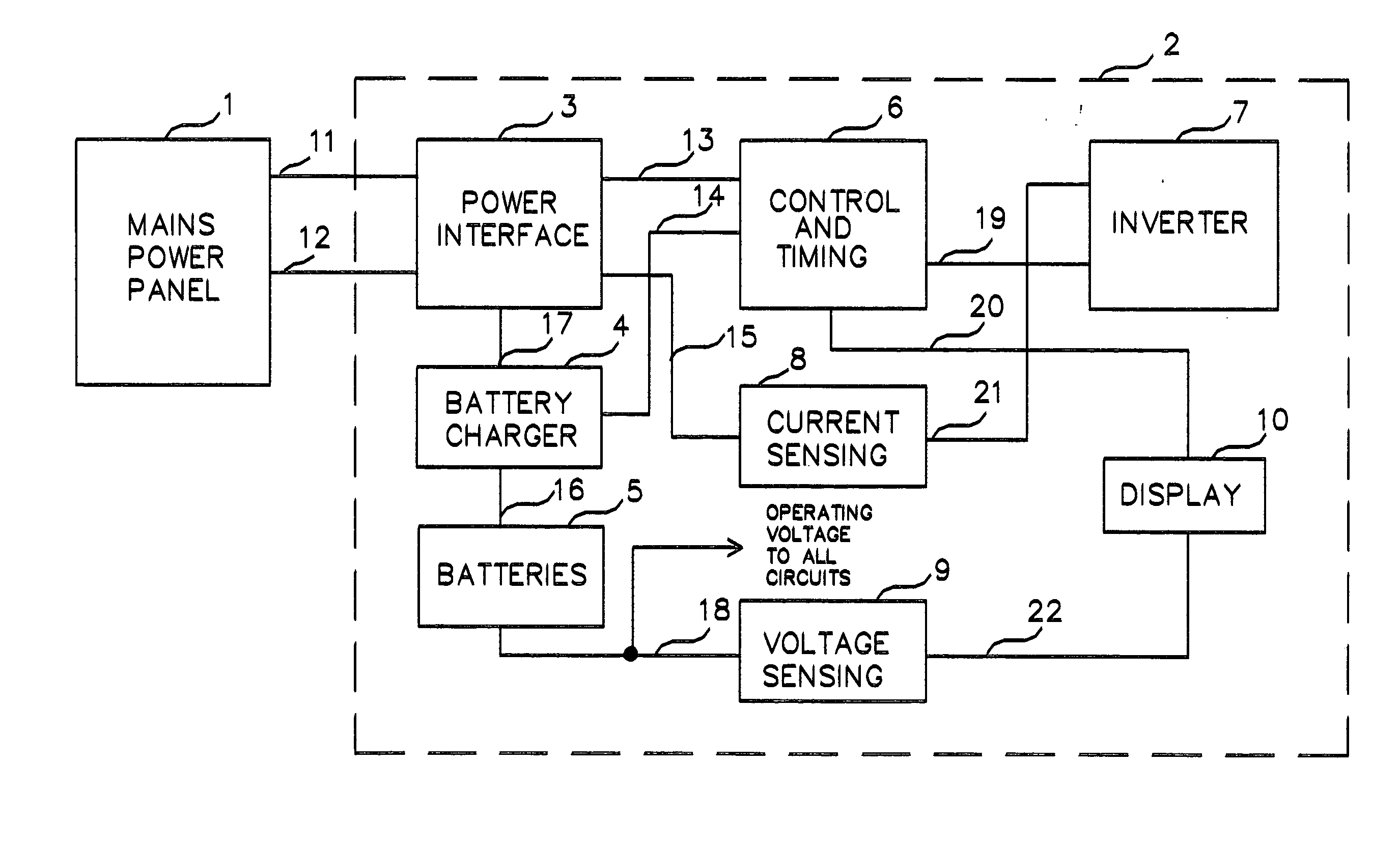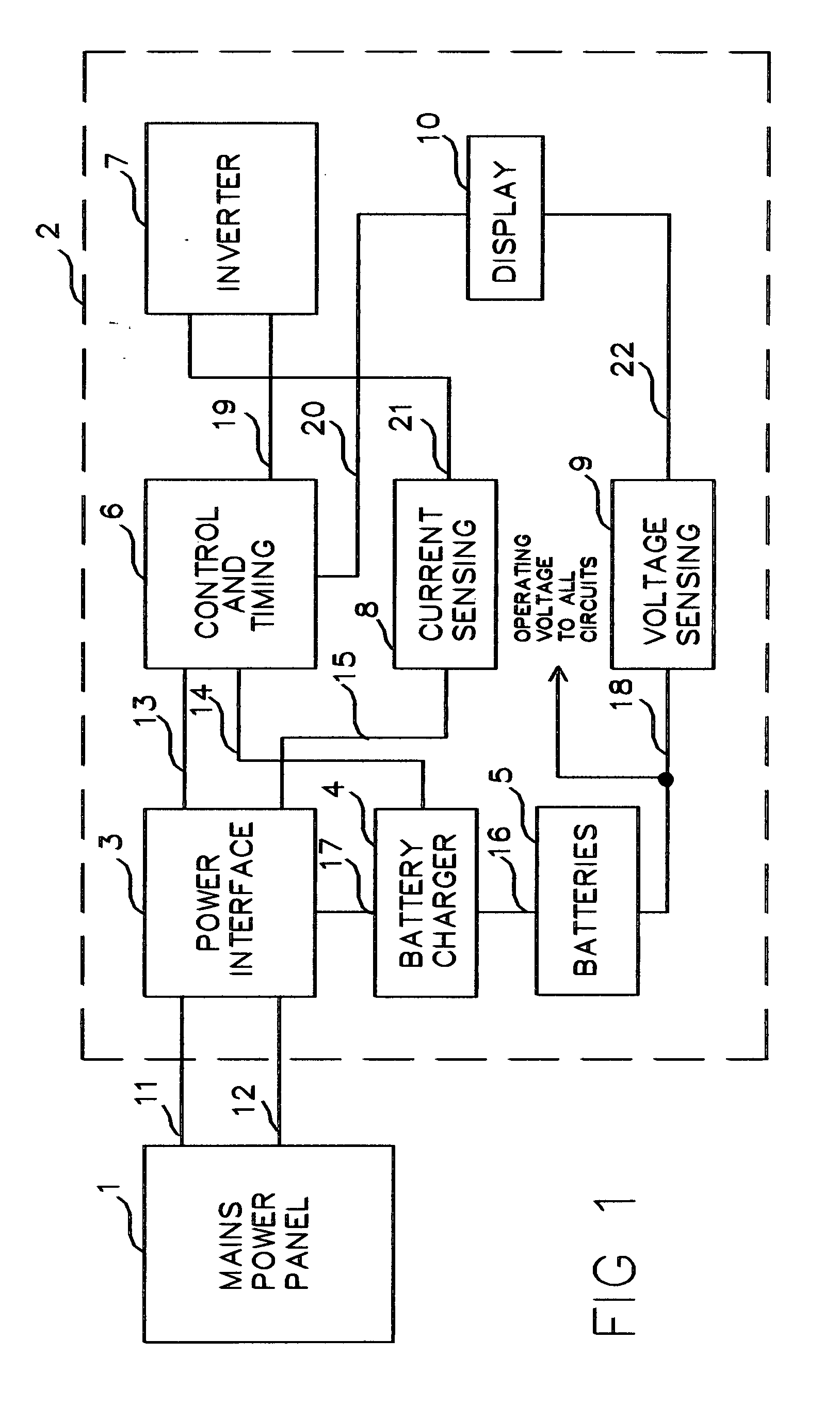Backup power system for electrical appliances
a technology for electrical appliances and power systems, applied in emergency power supply arrangements, safety/protection circuits, transportation and packaging, etc., can solve problems such as power outages, power grids or power transformers, household and structural appliances being deprived of their operating power, and rendering useless
- Summary
- Abstract
- Description
- Claims
- Application Information
AI Technical Summary
Problems solved by technology
Method used
Image
Examples
Embodiment Construction
[0030] The present invention relates to a backup power system primarily for delivering backup power to household or structural appliances typically, but not limited to, a furnace, refrigerator, freezer, or water pump.
[0031] In the event of failure of the source of primary power, appliances become inoperative. As a result, essential utilities are not available for the duration of the power failure. Inconveniences may include loss of refrigerated or frozen food, lack of heat, loss of water where water is pumped locally, and other similar services.
[0032] The purpose of the present invention is to reduce the inconveniences resulting from the loss of electrical power. The stated purpose is met by supplying an alternate source of electrical power during a power outage. Normal power is generally provided by a commercial power generating station with power lines connecting the generating station with households and structures. These external power lines generally terminate in a mains powe...
PUM
 Login to View More
Login to View More Abstract
Description
Claims
Application Information
 Login to View More
Login to View More - R&D
- Intellectual Property
- Life Sciences
- Materials
- Tech Scout
- Unparalleled Data Quality
- Higher Quality Content
- 60% Fewer Hallucinations
Browse by: Latest US Patents, China's latest patents, Technical Efficacy Thesaurus, Application Domain, Technology Topic, Popular Technical Reports.
© 2025 PatSnap. All rights reserved.Legal|Privacy policy|Modern Slavery Act Transparency Statement|Sitemap|About US| Contact US: help@patsnap.com



